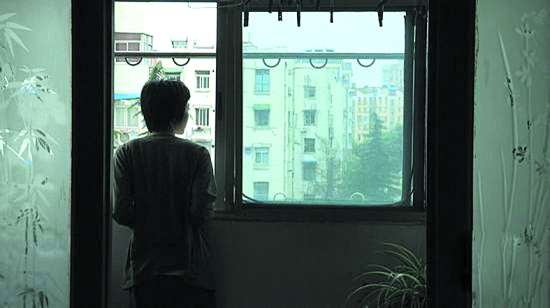1. Good Men, Good Women (Hou Hsiao-hsien, 1995)
2. Perceval le Gallois (Eric Rohmer, 1978)
3. A City of Sadness (Hou Hsiao-hsien, 1989)
4. A Brighter Summer Day (Edward Yang, 1991)
5. The Time to Live, the Time to Die (Hou Hsiao-hsien, 1985)
6. Breaking News (Johnnie To, 2004)
7. A Day in the Country (Jean Renoir, 1936)
8. Beau travail (Claire Denis, 1999)
9. My Neighbor Totoro (Hayao Miyazaki, 1988)
10. Pyaasa (Guru Dutt, 1957)
11. A Woman Under the Influence (John Cassavetes, 1974)
12. The Saga of Anatahan (Joseph von Sternberg, 1953)
13. The Taking of Pelham One Two Three (Joseph Sargent, 1974)
14. The Man Who Would Be King (John Huston, 1975)
15. The Incredible Shrinking Man (Jack Arnold, 1957)
16. Broadway Melody of 1940 (Norman Taurog, 1940)
17. Man's Favorite Sport? (Howard Hawks, 1964)
18. Blind Husbands (Erich von Stroheim, 1919)
19. The Bellboy (Jerry Lewis, 1960)
20. Night and Day (Hong Sangsoo, 2008)
21. Island of Lost Souls (Erle C. Kenton, 1932)
22. Dust in the Wind (Hou Hsiao-hsien, 1987)
23. The Lodger: A Story of the London Fog (Alfred Hitchcock, 1927)
24. On the Bowery (Lionel Rogosin, 1956)
25. Where Now are the Dreams of Youth (Yasujiro Ozu, 1932)
26. Diary of a Lost Girl (GW Pabst, 1929)
27. Jet Pilot (Joseph von Sternberg, 1957)
28. Phantom of the Paradise (Brian DePalma, 1974)
29. A Summer at Grandpa's (Hou Hsiao-hsien, 1984)
30. Safe in Hell (William Wellman, 1931)
31. Passage to Marseille (Michael Curtiz, 1944)
32. Le notti bianche (Luchino Visconti, 1957)
33. Ali: Fear Eats the Soul (Rainier Werner Fassbinder, 1974)
34. Cutter's Way (Ivan Passer, 1981)
35. Days of Youth (Yasujiro Ozu, 1929)
36. China Gate (Samuel Fuller, 1957)
37. Men in War (Anthony Mann, 1957)
38. The River (Tsai, Ming-liang, 1997)
39. Objective: Burma! (Raoul Walsh, 1945)
40. Cockfighter (Monte Hellman, 1974)
41. Mad Monkey Kung Fu (Lau Kar-leung, 1979)
42. Swing High, Swing Low (Mitchell Liesen, 1937)
43. I am a Fugitive from a Chain Gang (Mervyn LeRoy, 1932)
44. Kanal (Andrzej Wajda, 1957)
45. Comrade X (King Vidor, 1940)
46. The Poor Little Rich Girl (Maurice Tourneur, 1917)
47. Yesterday Once More (Johnnie To, 2004)
48. Death Race 2000 (Paul Bartel, 1975)
49. The Lower Depths (Akira Kurosawa, 1957)
50. Band of Angels (Raoul Walsh, 1957)
51. 3:10 to Yuma (Delmer Daves, 1957)
52. Daughter of the Nile (Hou Hsiao-hsien, 1987)
53. City Streets (Rouben Mamoulian, 1931)
54. Stage Fright (Alfred Hitchcock, 1950)
55. They Died with Their Boots On (Raoul Walsh, 1941)
56. The Constant Nymph (Edmond Goulding, 1943)
57. The Rink (Charles Chaplin, 1916)
58. Bardelys the Magnificent (King Vidor, 1926)
59. Waterloo Bridge (James Whale, 1931)
60. Saint Joan (Otto Preminger, 1957)
61. Golden Swallow (Chang Cheh, 1968)
62. Caged Heat (Jonathan Demme, 1974)
63. Hallelujah! (King Vidor, 1929)
64. So Long at the Fair (Antony Darnborough & Terence Fisher, 1950)
65. Near Dark (Kathryn Bigelow, 1987)
66. The Flying Guillotine (Ho Meng Hua, 1975)
67. Ill Met By Moonlight (Powell & Pressburger, 1957)
68. Eraserhead (David Lynch, 1977)
69. In the Cut (Jane Campion, 2003)
70. The Boys from Fengkuei (Hou Hsiao-hsien, 1983)
71. Broadway Melody of 1936 (Roy del Ruth, 1935)
72. Thunderbolt & Lightfoot (Michael Cimino, 1974)
73. Murders in the Rue Morgue (Robert Florey, 1932)
74. Liliom (Fritz Lang, 1934)
75. Merrily We Live (Norman Z. McLoed, 1938)
76. Executioners from Shaolin (Lau Kar-leung, 1977)
77. Number Seventeen (Alfred Hitchcock, 1932)
78. Wichita (Jacques Tourneur, 1955)
79. Springfield Rifle (Andre de Toth, 1952)
80. Il Grido (Michelangelo Antonioni, 1957)
81. I Flunked, But . . . (Yasujiro Ozu, 1930)
82. The Lodger (John Brahm, 1944)
83. Northern Pursuit (Raoul Walsh, 1943)
84. Killer Clans (Chor Yuen, 1976)
85. I am Waiting (Koreyoshi Kurehara, 1957)
86. Douglas Fairbanks in Robin Hood (Allan Dwan, 1922)
87. The Manxman (Alfred Hitchcock, 1929)
88. Flunky, Work Hard (Mikio Naruse, 1931)
89. Blazing Saddles (Mel Brooks, 1974)
90. Project A (Jackie Chan, 1983)
91. Hearts and Minds (Peter Davis, 1974)
92. This Land is Mine (Jean Renoir, 1943)
93. The Lady and the Beard (Yasujiro Ozu, 1931)
94. Legend of the Mountain (King Hu, 1979)
95. The Crimson Pirate (Robert Siodmak, 1952)
96. Show People (King Vidor, 1928)
97. The House on 92nd Street (Henry Hathaway, 1945)
98. The Miracle Worker (Arthur Penn, 1962)
99. The Armor of God (Jackie Chan, 1986)
100. Our Vines Have Tender Grapes (Roy Rowland, 1945)
101. Swordsman (King Hu, 1990)
102. The Tin Star (Anthony Mann, 1957)
103. Midnight Cowboy (John Schlesinger, 1969)
104. The Devil and Miss Jones (Sam Wood, 1941)
105. Project A 2 (Jackie Chan, 1987)
106. Fire Down Below (Robert Parrish, 1957)
107. Cobra Woman (Robert Siodmak, 1944)
108. The Rising of the Moon (John Ford, 1957)
109. Busting (Peter Hyams, 1974)
110. The Edge of the City (Martin Ritt, 1957)
111. Les Girls (George Cukor, 1957)
112. Rabid Dogs (Mario Bava, 1974)
113. The Great Waltz (Julien Duvivier, 1938)
114. Annie Oakley (George Stevens, 1935)
115. Heroes for Sale (William Wellman, 1933)
116. Great Day in the Morning (Jacques Tourneur, 1956)
117. The Enemy Below (Dick Powell, 1957)
118. Cimarron (Wesley Ruggles, 1931)
119. State Fair (Henry King, 1933)
120. A Song to Remember (Charles Vidor, 1945)
121. Time Without Pity (Joseph Losey, 1957)
122. Peyton Place (Mark Robson, 1957)
123. The Green Green Grass of Home (Hou Hsiao-hsien, 1983)













































